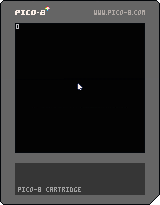
- OPENGL TEXTURE MOUSE COORDINATES HOW TO
- OPENGL TEXTURE MOUSE COORDINATES CODE
- OPENGL TEXTURE MOUSE COORDINATES FREE
OPENGL TEXTURE MOUSE COORDINATES FREE
Microsoft Visual Studio Community which is free for academic use.Microsoft Visual Studio Express which is free to use.compilers packaged with your preferred Linux distribution.
OPENGL TEXTURE MOUSE COORDINATES HOW TO

ViewPos.x = z_eye * ndc_x * aspect * tanFov

Recover the view space position by the XY normalized device coordinates: ndc_x, ndc_y = xy normalized device coordinates in range from (-1, -1) to (1, 1): Recover the Z distance in view space: z_ndc = 2.0 * depth - 1.0 Provided that it is a symmetrical perspective projection and the normalized device coordinates, the depth and the near and far plane are known. Since the projection matrix is defined by the field of view and the aspect ratio it is possible to recover the viewport position with the field of view and the aspect ratio. TVec3 Cross( TVec3 a, TVec3 b ) ģ Solutions to recover view space position in perspective projection
OPENGL TEXTURE MOUSE COORDINATES CODE
The following code does the same as gluLookAt or glm::lookAt does: using TVec3 = std::array

The model matrix defines the location, orientation and the relative size of an mesh in the scene. In the coordinate system on the viewport, the X-axis points to the left, the Y-axis up and the Z-axis out of the view (Note in a right hand system the Z-Axis is the cross product of the X-Axis and the Y-Axis). The view matrix transforms from the world space to the view (eye) space.

The view matrix describes the direction and position from which the scene is looked at. The projection matrix transforms from view space to the clip space, and the coordinates in the clip space are transformed to the normalized device coordinates (NDC) in the range (-1, -1, -1) to (1, 1, 1) by dividing with the w component of the clip coordinates. The projection matrix describes the mapping from 3D points of a scene, to 2D points of the viewport. In a rendering, each mesh of the scene usually is transformed by the model matrix, the view matrix and the projection matrix.


 0 kommentar(er)
0 kommentar(er)
